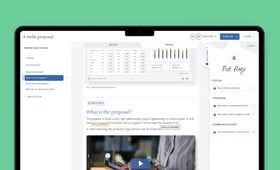Despite being more diverse and skilled than ever, boards still face performance challenges. Just 30% of C-suite executives rate their board as “good” or “excellent”. Our research on board effectiveness shows that boards struggle with issues like information overload and packed agendas.
So, how do you improve board effectiveness?
Start by understanding what drives board impact. Then track progress with the right tools and metrics.
Why do we measure board effectiveness?
Measuring board effectiveness supports strong governance and ensures boards add value. Regular assessments help identify what’s working and what needs improvement.
Governance codes and best practice guidelines recommend periodic board reviews to uphold high standards and accountability.
What board effectiveness metrics should you assess?
Boards face growing challenges: broader responsibilities, persistent economic and geopolitical uncertainty, and fast-changing business models driven by AI.
To navigate this, consider board effectiveness beyond the usual three pillars: individuals, information, and infrastructure. It is critical to also consider the board’s role in innovation and decision-making agility.
Success criteria and benchmarks
Ask this first: What does success look like for your board?
Start with a focused and clearly defined mandate. This helps with agenda planning, board reporting, and aligning everyone on the board’s purpose and goals.
Next, define your success criteria: specific goals, outcomes, and metrics that show the board is adding value. These should tie to your organization's value creation plan.
Then assess if your board’s makeup, culture, communication, and processes support those goals.
Benchmarks also help. Benchmarking current performance to industry standards or past data will show whether your board is improving.
Key performance indicators
A KPI dashboard gives a quick view of the board’s performance. Metrics can include decision speed and quality, independence, director engagement, and evaluation scores.
Clear KPIs, tracked regularly, link board actions to real results. They help spot trends and spark more informed discussions about what the board or individual board members must change.
A well-designed dashboard cuts through data overload and helps directors focus on what matters most.
Which board assessment frameworks and tools work best?
Once you define success, collect and report on key metrics. Use tools and frameworks that go beyond checklists and uncover new insights.
Use a data-driven approach. Look at composition, agenda focus, meeting structure, behaviors, and reporting quality. This will surface new tactics to boost performance.
The "marginal gains" strategy, used in fields like sports and finance, works here too and will add value to the board.
Evaluation methods
Your board evaluation should test whether the team’s structure, dynamics, and processes are working, based on your organization’s unique needs.
Common methods include:
- Self-assessment
- Peer reviews
- Facilitated external evaluations
- Chair and CEO reviews
- Stakeholder and investor feedback
- Board KPI tracking
Digital tools help with each step, gathering data, comparing benchmarks, and finding areas for improvement.
External vs internal reviews
Internal assessments are helpful, but can become routine and lack objectivity. External reviews offer fresh, unbiased insights. More boards are making external evaluations a regular part of the calendar.
Many governance codes now require them every few years.
What are the quantitative and qualitative measures of board effectiveness?
Qualitative insights show the "why" and “how” behind board behavior. However, they should not be used in isolation.
Quantitative data covers things like meeting frequency, prep time, decision alignment, and director satisfaction. These metrics can be tracked over time or compared across boards.
Board dynamics and culture
A board’s culture is shaped by how members talk, work together, and make decisions. Other factors include board size, composition, and governance structure, like whether the CEO and chair are the same person.
Culture affects not just the board’s performance but company results too. Research by the Board Intelligence Think Tank found that organizations with a healthy culture deliver 200% higher shareholder returns. Corporate board dynamics can shape the success of organizational transformation programs, with studies showing that board structures, board diversity, and decision-making processes can facilitate or impede transformation initiatives.
Implementing measurement systems
Plenty of tools exist and are becoming increasingly easy to use.
For example, boards can make use of online self-assessment tools, get real-time data from their board portal, or track the quality of their board papers through tools like Lucia, Board Intelligence’s AI-powered board reporting platform, which analyzes board papers as they are written. Together with the Chartered Governance Institute UK & Ireland, Board Intelligence has also created two free tools to help organizations evaluate the quality and efficiency of their board reporting: a board reporting self-assessment tool and a board reporting calculator.
These tools help turn board data into action.
Data collection and review cycles
Surveys and questionnaires, commonly used to evaluate board performance, let you gather input from many people quickly. Best practice suggests conducting a survey-based board assessment once a year, and an external board evaluation once every three years. These processes should also include the board’s committees.
Action planning and implementation
Once you have uncovered insights, create a clear plan.
Prioritize key issues. Define specific, measurable actions and assign ownership. Set up a system to track progress and update the board regularly.
You can read our guidance on best practice performance reporting here.
Tracking progress and improvement
Board meeting minutes record board discussion outcomes but don’t track progress. Your board pack should include an action tracker that separates new, in-progress, and closed actions.
If committees are handling delegated work, make sure they send high-quality updates. Board portals help share that information securely.
Performance monitoring and feedback
Used responsibly, AI tools can monitor board sentiment, track individual and group performance, and flag risky behaviors.
You can also hire an external observer to attend meetings, observe how the board works, and provide feedback on dynamics, decisions, and engagement levels.
Continuous improvement
The chair should encourage regular, open discussions about board performance. That means creating space for honest feedback and new ideas.
Build a culture of learning by reviewing your board effectiveness tools and methods often, and updating them as your needs change.
FAQs
How often should boards conduct effectiveness reviews?
It depends on regulatory requirements, best practices, and the organization’s specific needs. Most organizations do a yearly high-level performance review. During significant changes, like mergers, leadership changes, or regulatory updates, more frequent checks can help.
What are the key metrics for measuring board performance?
Key metrics focus on operational efficiency and strategic impact. Common ones include: board composition and independence, board engagement and attendance, alignment with corporate strategy, and risk and compliance oversight. Other metrics include stakeholder satisfaction and financial oversight.
Should boards use internal or external evaluators to measure their effectiveness?
The best approach is to use both. Annual internal reviews keep you on track, while external evaluations every 2–3 years offer unbiased insights. High-risk industries may benefit from more frequent external reviews.



